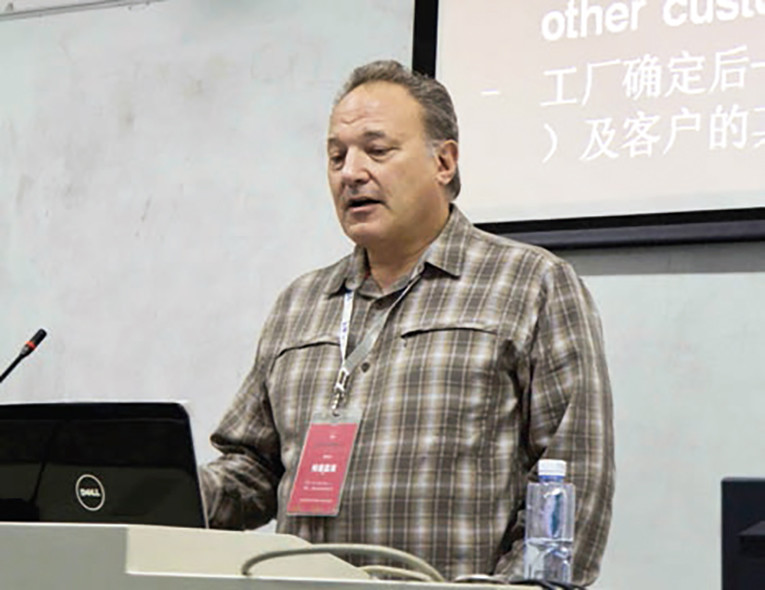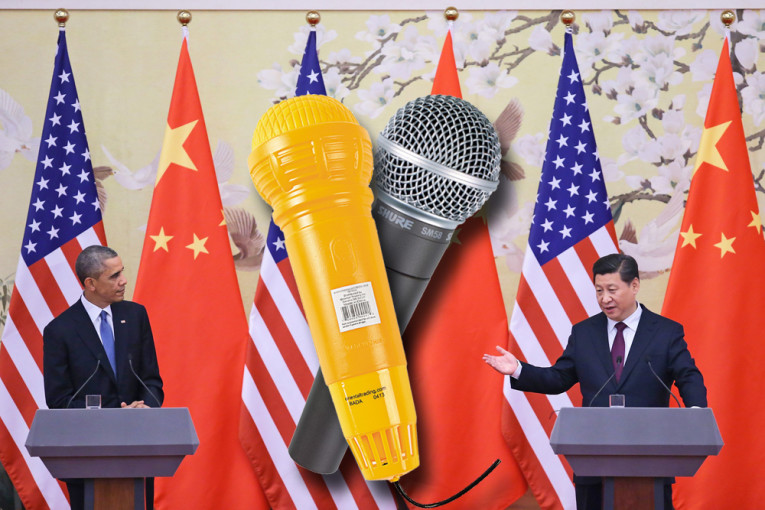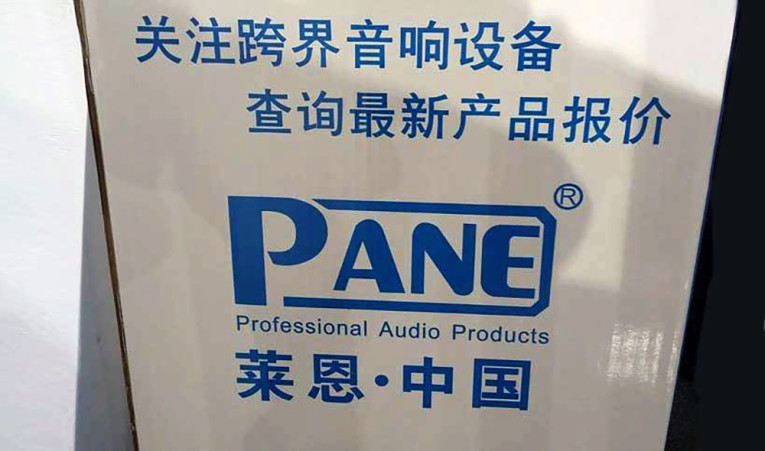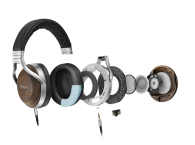
While most readers of Voice Coil have read my articles over the last decade or two, the primary focus of them has centered on company profiles, new technology, or speaker parts tutorials. Perhaps a bit of background on my firm, Menlo Scientific, might provide a reference point for this article. I started my audio engineering consulting firm in 1983, after running an audio manufacturing company for the previous 10 years. Back in the 1970s, we made our flagship products and subcontracted our designs to small Japanese contract manufacturers.
At Menlo Scientific most of our clients are Western firms, both in the United States and Europe, but we also have always had a number of Asian clients. Our work involves a wide mix of new technology and product development. Lately, we have a lot of projects with microspeakers, headphones, active noise cancelation, signal processing, mic elements, and mic arrays.
Another big share of our time is spent giving guidance on product design, development, and product definition. This includes productization of new inventions and developing techniques to reference designs for component parts vendors. The topic of my presentation centered on sourcing, vendor qualification, and evaluation with an underlying theme of the many elements needed to trust a vendor.
For over 25 years, we have introduced clients to candidate factories. Typically, a dozen factories that are in the game are profiled followed by discussion with the client and site visits to the short list of about six candidates. Vendor selection includes audits, which are not financial, but provide a vendor profile consisting of many factors which we will discuss shortly. After factory selection, we often support remedial measures for process control and QC procedures as necessary.
Most big customers already have a check list of what they want. Typically price competitiveness, not just on unit cost, but also a company with the wisdom to understand cost drivers is a top priority. This means having a sense of aspects that may have an impact on not just unit cost, but manufacturability, yield, field failure, production bottlenecks, and delays. Another factor is a company’s experience, quality of existing customers, the length of time the vendor tends to hang onto their customers, the customers they have lost, and to which competitor. Additional aspects on customer/factory musical chairs includes what their past customers learned that drove them away and was it a trip from the frying pan into the fire?

Another factor is the ability of factory management and its engineering group to understand and buy into the innovation if there is new technology or a new product category. Do they see the business opportunity and are they ready to make the investment and commitment in time, money, and resources to bring the project into production? If the factory team does not “get it” and there is no buy-in, then any bump in the road may push the development off track or cause it to stall out completely.
Other considerations are production volume, spare capacity, and location of this capacity. For example, a large operation may have an overloaded product development group, too many workers, and too little work. Factory management may be open to seducing a customer with an existing “hot” product by offering incentives that attract the customer from a competitor.
Of course, two things could be achieved: acquisition of a new customer and some damage to their competitor. Incentives from the factory might include waived tooling fees to financing inventory of the product they produce. An alternative example might be a company’s production is at full tilt but the engineering team is not at capacity and some long-term production is coming to an end. Sometimes, factory management can see that a big customer is losing market share and might be ready to take on a new partner. Incentives to new customers, who have a brighter future, might include negotiating for NRE to be waived or extending payment terms, etc.
While time to market counts for everyone, special cases like cell phones and tablets are like sushi — time is of the essence. Today’s sushi is tomorrow’s fish bait. This is not just the rule for fast track product development, but also for production rampup. There is not much sense creating a sensation if you cannot supply demand! This brings in logistics from vertical integration, the factory’s control of their inventory, and related stuff.
We will touch on the integrity of the supply chain in more detail but the relationship of your vendor to their suppliers is a big factor. Are there multiple supply sources, are they the right choice or were they selected because they are providing kickbacks to a dirty purchasing department?
There is also the issue of a customer’s comfort level (or lack of it) in starting to work with a supplier factory who has an ongoing relationship with their competitor. You have to ask the question, “Will the factory show my designs to my competitor?” Still other considerations are the interest level of the vendors, and the level of success they’ve had with similar projects of comparable size, challenge, and quality. But, the main focus of this article is knowledge of the vendors and their trustworthiness. Perhaps this is where the East and West’s perceived realities and sensibilities diverge to the greatest extent.
Communications with your contact at the factory is a hidden factor. Honest, quick, cognitive answers from a factory liaison who has a sense of the customer’s wants and needs can be a deciding consideration. There are precious few bi-cultural sales representatives with a clear understanding of both their factory as well as what the customer wants. Of course, an Asian factory with a strong United States office could reduce the amount of travel to Asia for the customer’s product development team.

Most of this is old news to both buyers and Asian vendors. The big disconnect, and often unvoiced, selection decision comes from another consideration. Does the potential customer trust the vendor? I know that the vast majority of Asian vendors believe their firms are trustworthy. Yet, many of them would be disturbed that the big sale(s) they lost were due to this factor. There are quite a few components to how trustworthiness is perceived by Western buyers that may come as a surprise to Asia vendors.
Circle of Trust
Perhaps our readers have seen the movie, Meet the Fockers. In the movie, Robert De Niro’s character explains the responsibility of being in “the circle of trust” to Ben Stiller’s character. I will try to explain the speaker industry version here.
Management
The integrity of the management, while not the whole story, is certainly the most important consideration. At worst, short-sighted thinking from the top may become a nightmare for their customers. There have been situations where the factory is selling the customer’s product sideways, such as into the China market or to obscure markets (such as South American or African countries). Sometimes the product is sold with the customer’s logo, or supplied with another brand logo. This can be quite painful, especially when your tooling is used and the counterfeiters selling the product are undercutting your pricing.
Often, the sideways version will be cheapened as counterfeit products never command the price of the real thing. With cheapened copies in the market, broken or prematurely worn products that are mistaken for the real thing reduce the perceived value of your product. Sadly, companies that were run with integrity for decades may then have COO issues. Ironically, to Western companies COO means Chief Operating Officer, but in Asia COO translates to Child-Of-Owner.
Another issue is tooling. A company with integrity never considers “hijacking” tooling when it is time for the customer and factory to part company; yet, this is a real issue even today. Life is never simple, and if the relationship is ending, it is for a reason.
Maybe the customer was a pain or slow to pay, or maybe the factory was always late or product quality was less than wonderful. In any case, some factories are more likely to hold tooling hostage, while with others this would never even be a consideration.
Questionable Customers
A visit to the “night market” in any large Chinese city will reveal counterfeits of popular products. In November, when I was in Shanghai, I strolled through a large complex of small concession stands. They were open all day and into the evening and not on the street but in a large complex. Between the famous fake purses, jackets, shoes, luggage, were Dr. Dre Beats headsets. Even at a quick glance I could see these were not off the real tool and my little survey showed a couple of levels of quality (or lack of it).
As I waited for my associates to make their purchases, one of the Chinese shopkeepers asked me about buying the headset. I mentioned I was involved in the design of the product and told her that her stuff was fake. Of course, everything in the shop and the whole complex was fake, and this pleasant Chinese girl laughingly replied that she knew the Beats headphones were real because Dr. Dre was her brother. I couldn’t top that.
However, for an otherwise legitimate factory to make counterfeits is a red light to most customers. The factory will have a range of explanations — the copies are just as good as the real thing, the product is being shipped to the Middle East or Africa, the factory is innocent and the product is being built to (the counterfeiter’s) specs. Sorry, none of this is okay.
Engineering Turnover
Sometimes staff changes are also a factor. Even if the management is honest, there are many issues if engineers are constantly moving to other companies. One question is will they take designs under development to their next stop (maybe where your competitor builds his products)? So staff stability is an important element of a trustworthy vendor.

Counterfeit Test Systems, Software, and Materials
Many “fake” versions of popular Western test systems are used in Chinese factories. Using these counterfeit systems sends the wrong message to potential customers. How can they trust you to protect their own intellectual property if you are openly using “fake” test equipment? Western companies don’t care that you consider copies of the “real” test equipment acceptable or that the bogus product is used only for on-line QC, and the customer is always right.
Purchasing Department Integrity
Integrity of a purchasing staff is sometimes questioned when they choose not to buy from a customer’s preferred vendor because of the sweetheart deals they are offered. Vendors have been known to substitute grades of materials that are inferior to what their customers have specified. Sometimes, the issue is purchasing departments sourcing from cheaper parts distributors who buy their way in because the price is right but the parts are counterfeit or the distributor will accept long lead times on payment.
Many vendors of ICs and other components provide decent grade products, which carry the label of more upscale brands. The issue is that the design engineer has more experience than the buyer at the factory and subtle (and not so subtle) differences exist between real Kapton, genuine ferrofluid, or a low ESD cap. If something less was acceptable, the engineer would have spec’d it.
Life is complicated. Not every Western company is concerned that their Chinese vendor is using software copies, and in fact some engineers from the United States may go shopping for “bootleg” DVDs and software during their time off. But larger customers do care and check. There is often a company policy of preference for using vendors with genuine software.
The Tooling Room Should Be Top Secret!
It is also not unusual to see a big garage door open in the tooling rooms of China factories. Not a good idea! The tooling room is where your customer’s future products are being readied before production. Who has access? Can workers look inside? Can your customer’s competitors walk around the tooling room? If you let a potential new customer walk around the tooling room and he can see his competitor’s products being tooled, you may scare him away! Customers may also be concerned about getting tooling back. If a customer is unhappy with the factory, will there be issues getting the tooling returned?
The Future
At ISEAT there were many presentations of genuine research from numerous Chinese engineers. Chinese companies are creating patented technology at a rapid rate. And, the Chinese industry is starting to have the same issues with counterfeits, patent infringement, and intellectual property as Western firms. At the moment, the attitudes of China’s businessmen are in transition as they experience “the shoe being on the other foot.” VC
This article was originally published in Voice Coil, March 2012






